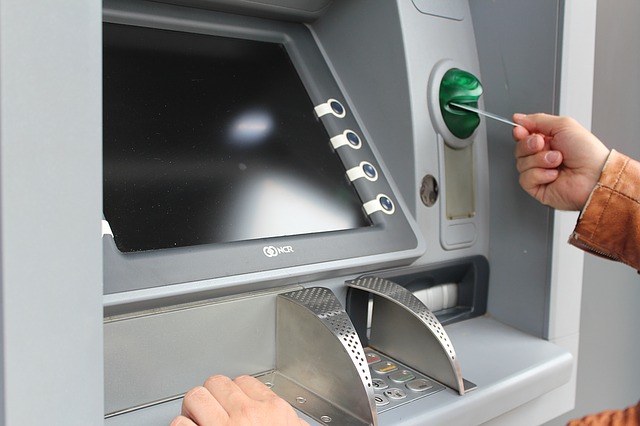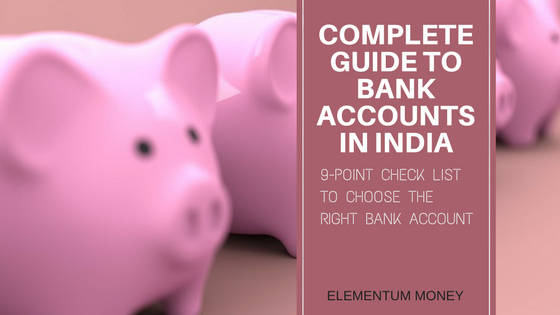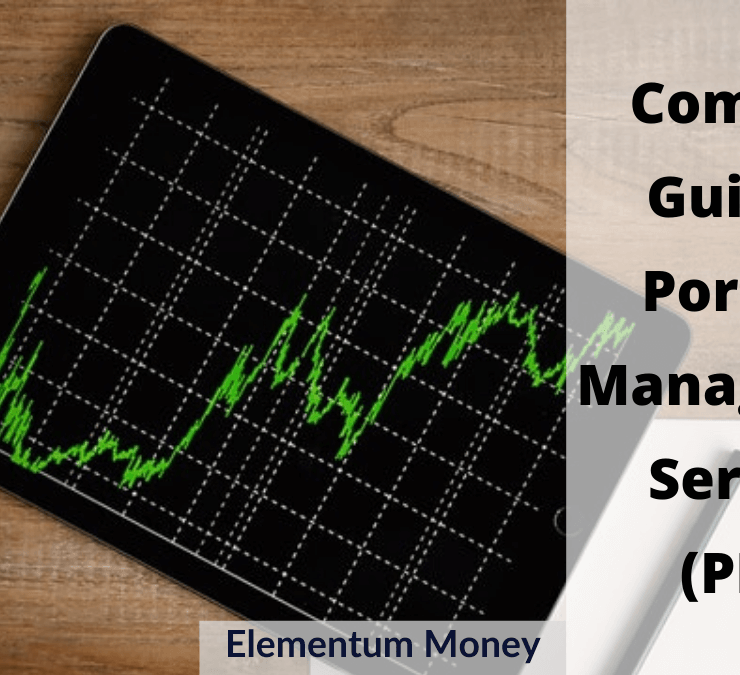
There are times when we assume that everyone is aware of basic building blocks. I think most Personal Finance bloggers are guilty of this when all we want to talk/write about is the relatively complicated aspect of financial planning – investing, insurance and the likes. But what about something that’s a must-have today? A bank account? I realised in that sphere I have only talked about the optimal number of savings accounts one should hold.
For the Indian banking sector, Wikipedia lists 21 public sector banks, 26 private sector bank, 13 small finance banks & local area banks and 5 payment banks! How do you then even choose what kind of account and how to decide the bank which suits your needs?
Let’s start with understanding the 2 main types of accounts:
- Savings account
This is the bank account used by retail individuals for personal finance needs. Unlike the US, there is no concept of checking accounts in India. These accounts can be opened only in a bank and have no restriction with respect to the maximum balance that one can maintain, but often come with minimum balance requirements to avoid any maintenance charges. Whatever your balance in the account, it earns a designated interest income on it. Even the salary account that you might have opened is a form of savings account, albeit with no minimum balance requirement.
What then is a digital savings account or a digital bank account? With the government’s push to make finance convenient, there is now a possibility to open a bank account without the mandatory meeting with a bank representative. Using your aadhaar number as an authentication, the database is pulled out and pre-filled and your account can be opened instantly. This is an account that can be opened with payment banks and even some mainstream banks like Axis Bank, DBS and Kotak Mahindra Bank.
Look at digital savings accounts only as a booster seat on a bicycle – it is good only till the time you visit a branch and authenticate it with them in person. Click To TweetThis account is one in which the maximum balance that can be maintained is restricted to Rs. 1 Lakh and it is valid only for a year unless the in-person authentication is done.
Another type of savings account is the one attached to post offices – the post office saving account. This account was extremely popular when bank branches were far and few in number. Now, it is still an attractive option for people looking for a low balance account. The minimum deposit in these accounts is a mere Rs. 50 ($1) while the maximum balance is Rs. 1 Lakh for an individual account holder and Rs. 2 Lakh for joint account holders. However, the chequebook is optional (and available only with a minimum balance of Rs. 500) and there is No ATM facility.
- Current Account
Ever wondered what is a current account while making that choice when you withdraw cash from an ATM? For many years, I made the robotic action of mindlessly choosing a savings account. But while working in the financial services industry, this has become part of a basic understanding I am bound to have.
Current Accounts are bank accounts required by companies or self-employed individuals to conduct their business transactions. The main distinction of these accounts is that they offer zero interest on the balance. You might be wondering, why would someone open such an account then?
As a business, the requirements of a bank account are very different – a higher number of transactions a day, more chequebooks, more cash deposit options etc.
A current bank account is more like a layover on a journey for business funds, whereas in a savings account it is more like a nesting ground for your personal money. Click To TweetA standard bank account comes with a customized chequebook, an account passbook, a debit card and a customer ID (if you are new to the bank as that is a unique number for all your relationships with the bank).
Considering the plethora of banks now operating in India, how do you choose a savings account that would be best suited to your needs? What are the things that you should check to know that you made the right choice?
From my experience, and having heard people in the research that we often conduct, here are some of the pointers that must be on your list when you want to open a bank account:
- Minimum balance
This is one of the most important pointers that you must know about any bank account that you hold. Did you know, in the 8 month period of April – November 2017, PSU banks collected Rs. 2320.96 Crore as fees for non-compliance of minimum balance in savings accounts.
Salary accounts are zero balance accounts as the bank knows they will get a monthly credit and will be actively used. In case of any other account, take one with a minimum balance that you are sure you can maintain.
- Interest Rate
Whatever balance you choose to maintain in a savings account, earns interest income. In most cases, this interest rate is lower than the rate of inflation and does little to counter it. Interest rate makes a difference to your life only if you intend to keep an extremely high balance in your account.
Some banks do offer a substantially higher interest rate. Kotak Mahindra Bank’s campaign of 6 > 4 is still widely recalled for the differential interest rate. However, the advertised 6{76b947d7ef5b3424fa3b69da76ad2c33c34408872c6cc7893e56cc055d3cd886} is only on balanced above Rs. 1 Lakh.
If you have maintained Rs. 50,000 in your savings account, the difference between 3.5{76b947d7ef5b3424fa3b69da76ad2c33c34408872c6cc7893e56cc055d3cd886} and 6{76b947d7ef5b3424fa3b69da76ad2c33c34408872c6cc7893e56cc055d3cd886} will only be Rs. 1750 viz a vis Rs. 3000 – a mere Rs. 1250. However, if you end up maintaining a balance of Rs. 10 Lakh (Rs. 10,00,000) the difference in interest income could be between Rs. 35,000 and Rs. 57,500! (Interest of 3.5{76b947d7ef5b3424fa3b69da76ad2c33c34408872c6cc7893e56cc055d3cd886} on 1st 1 Lakh and 6{76b947d7ef5b3424fa3b69da76ad2c33c34408872c6cc7893e56cc055d3cd886} on rest of the 9 Lakh)
3. The complete schedule of charges
Before opening a bank account, as for the complete schedule of charges. We assume a lot of things are free with a bank account but end up paying for them without realizing it.
Did you know the SMS’s that you get informing you about the transaction are at a charge of Rs. 15 (25c) per quarter? Check for all such sneaky charges before signing up for your account.
4. Internet banking and mobile banking experience
If you having even a basic hold of the digital way of life, then you will be operating your bank account mostly through Internet banking or its’ mobile app. Reasons to visit a bank branch are getting fewer every day.
Check with a friend who has an account in the bank that you are considering for reviews about their digital services. Ask them to show you the interface or the customer experience. You don’t want to open an account with a bank whose app crashes on you every time you want to check your balance or urgently transfer funds.
Also check if digital banking lets you open other allied products like a Fixed Deposit (FD), Recurring Deposit (RD), Public Provident Fund (PPF) or even apply for a loan easily. Check if service requests related to your bank account, like a new cheque book, can be raised conveniently.
5. ATM Transactions

ATM transaction charges vary widely across banks and accounts. Ensure you get one with minimal charges.
Cash is still king in India, despite demonetization. Most banks put a charge on more than 5 withdrawals in a month, at other bank ATMs. Granted the charge is only Rs. 20 per such withdrawal, but over time it can add up to a substantial sum. Check if your bank account offers unlimited ATM withdrawals at any bank ATM. This is a handy feature to have as you could need cash any time and not having to hunt your own bank’s ATM helps.
Another thing to check on ATM transactions, is the maximum possible cash withdrawal. In case you have a sudden requirement for cash, maybe to buy a high-ticket item, being able to withdraw the amount in one day is important. The limit of withdrawing cash from other bank ATMs is limited to Rs. 10,000. However, the daily cash withdrawal limit at own bank ATM varies with the bank and the account that you choose.
6. Branch network
Even with all the strides that we have taken in digital banking, branch network remains one of the biggest consideration factors for people in India. This is understandable for two reasons.
In case of any hassles or issues with a complex product like banking, you don’t need to be stuck trying to dial into phone banking or get frustrated. You know you can walk to a nearby branch and have the matter resolved. However, branch experience is one of the main reasons for dissatisfaction with PSU Banks. So, go out there to your local branch and get a feel of it. Is the staff friendly and helpful or does the environment reek of chaos? Would you want to come here for your banking requirements?
Branch network also builds trust. A bank is an entity that you are trusting with your hard earned money. When you know that a bank has 1000s of branches, the probability of your money being at risk is that much lower. That’s why payment banks are yet to build enough trust for customers to be able to deposit higher amounts of their hard-earned money.
7. Special Accounts
Most banks offer special bank accounts for senior citizens which offer a higher rate on fixed deposit. Some banks also have a specialized offering for women which often includes a lot of lifestyle offers.
Check with your bank for these offerings to see if they suit you.
8. Automatic Fixed Deposit
Automatic FD, sweep-in FD or flexi FD is a great feature if you are looking for a push to save. I have talked about it earlier, as something which helped me save when I started working.
If you enquire, most banks offer this facility where any balance beyond a designated amount gets swept into a Fixed Deposit attached to your bank account. The best part? It is considered as a part of your bank balance, you earn a higher interest rate and your cheques will not bounce as they pull funds from the attached FD.
From my experience, it’s a great way to save. So, when opening an account, ask the bank representative about it and ensure you really end up saving with your savings account.
9. Debit Card
Every bank account comes with a debit card. Today most banks try to differentiate the savings accounts through their Debit Card and its features.
International Debit Cards allow you to easily swipe it globally. A lot of accounts offer lifestyle privileges through debit cards, one of the most popular being Airport Lounge Access. The more premium the Debit Card also means higher the daily transaction limit on it. However, most of these benefits come with the requirement of a high account balance to be maintained or an annual fees on the Debit Card. Know what you really need, and then go for it.
A bank account is a long-term relationship. Once you choose a bank account based on these checkpoints, ensure that you also keep yourself updated on any changes in balance requirement, interest rate or fees and charges.
Does your bank account satisfy all these parameters? Is there any other aspect one must consider while choosing a bank account? Let me know your thoughts in the comments below or email me at aparna@elementummoney.com

Take your first step today. Sign up for the Elementum Money Weekly Newsletter to download the Financial Feminist checklist. Also,get nuggets of financial wisdom with our 3 posts every week, directly to your inbox. Have more questions, feel free to send any of them my way at aparna@elementummoney.com.
Related Posts:





Leave a Reply